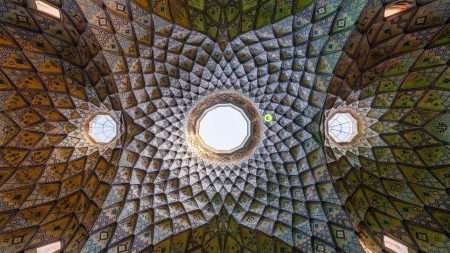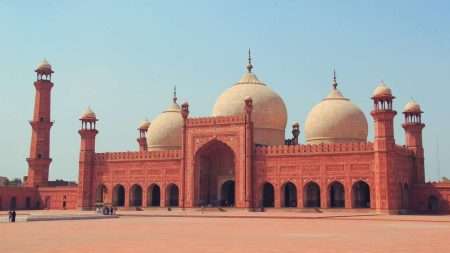Muqarnas are among the most fascinating Islamic architectural features, blending art and math in spellbinding beauty.
Browsing: Architecture
The Badshahi Mosque represents the final evolution of the Mughal mosque, fusing design elements embraced by Emperor Aurangzeb’s predecessors.
Moorish Revival synagogues serve as reminders of an era in which Jews looked to Islamic architecture to represent themselves in the West.
The Museum at Eldridge Street tells the story of Eastern European Jewish immigrants and the synagogue and community they formed on New York’s Lower East Side.
A worldwide tour sparked heiress Doris Duke’s love of Islamic art and architecture and the construction of her Shangri La estate in Hawaii.
With the Durbar Room, the eminent Punjabi Sikh architect and designer Bhai Ram Singh realized Queen Victoria’s wish for an “Indian dining room.”
The Sultan Mosque serves as a marker reflecting the end of Islamic rule of Singapore and the island’s emergence as a British colony and entrepôt.
Proud Bukharans want to cherish their history, but not at the expense of foregoing the future.
At Olana, East meets West in an American’s mind.
Masjid Wilayah fuses Ottoman, Umayyad, Indo-Persian, and Malay architecture.
The Taj Mahal is no mere secular expression of a man’s love for his wife. It reflects his desire that his companion receives Divine Mercy and the ultimate reward: spending eternity with the Creator in “gardens beneath which rivers flow.”
For some, the Moorish Revival style was a vehicle for performative exoticism. But for others, it provided another way of looking at themselves and their place in America.












